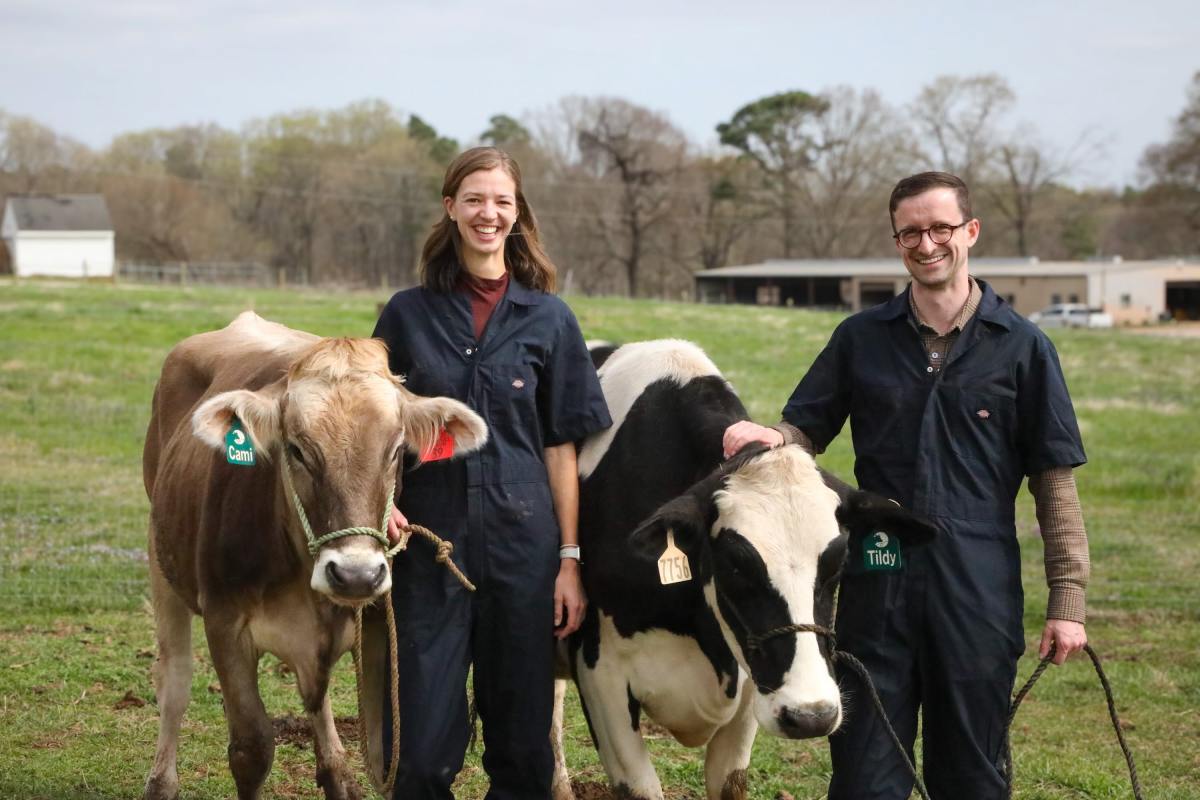Hoofprint Biome: Revolutionizing Cow Nutrition and Reducing Methane Emissions
Addressing the challenge of methane emissions from cows requires a fresh perspective, particularly one that aligns with agricultural practices. For years, efforts to mitigate this potent greenhouse gas have struggled to make significant progress. However, innovative solutions are emerging that focus on enhancing the health and productivity of livestock, offering a dual benefit of reducing methane emissions and improving farm efficiency.
Innovative Approach to Methane Reduction
Kathryn Polkoff, co-founder and CEO of Hoofprint Biome, has taken a unique approach to this long-standing issue. With a PhD in animal science, her understanding of methane emissions began not with climate change discussions but from the perspective of animal health and productivity.
Revolutionary Discovery in Cow Microbiome
Polkoff and her co-founder, Scott Collins, have developed a groundbreaking method to modify a cow’s microbiome using enzymes. This innovation not only reduces methane emissions but also enhances the nutrients available to the cows, leading to improved overall health.
Recently, Hoofprint Biome secured a $15 million Series A funding round led by SOSV, with participation from various investors including AgriZeroNZ, Alexandria Venture Investments, Amazon’s Climate Pledge Fund, and more. This funding aims to facilitate trials of their enzymes on farms.
Understanding the Rumen and Its Role
The rumen, a vital component of a cow’s digestive system, is described as a “hodgepodge assembly line.” Cows have evolved with a complex microbiome that assists in breaking down hard-to-digest food, allowing for nutrient absorption. However, certain microbes in this environment can hijack these nutrients, producing methane as a byproduct.
- Methane’s Impact: Methane is a greenhouse gas that warms the planet 84 times more than the same volume of carbon dioxide.
- Microbial Competition: Some microbes compete with cows for nutrients, leading to increased methane production.
Sustainable Solutions with Enzymes
Hoofprint’s innovative enzymes suppress the growth of methane-producing microbes in the rumen. These enzymes are derived from yeast, similar to other industrial enzymes used in products like cheese and detergents. This natural approach is expected to mitigate backlash that other products have faced in the market.
Targeting Feed Efficiency
Polkoff aims for a 5% improvement in feed efficiency, which translates to how effectively cows convert feed into weight gain. By enhancing the rumen’s efficiency, Hoofprint is poised to offer a practical solution that farmers will find valuable.
According to Po Bronson, the general partner at SOSV, improving feed efficiency while reducing methane emissions is crucial for the success of agricultural innovations. “Knocking down methane is table stakes,” he stated. “To make it a more productive thing is what they will pay for.”
For more information on sustainable farming practices and innovations in livestock management, visit Sustainable Farming Strategies or check out TechCrunch’s latest articles on agricultural technology.







